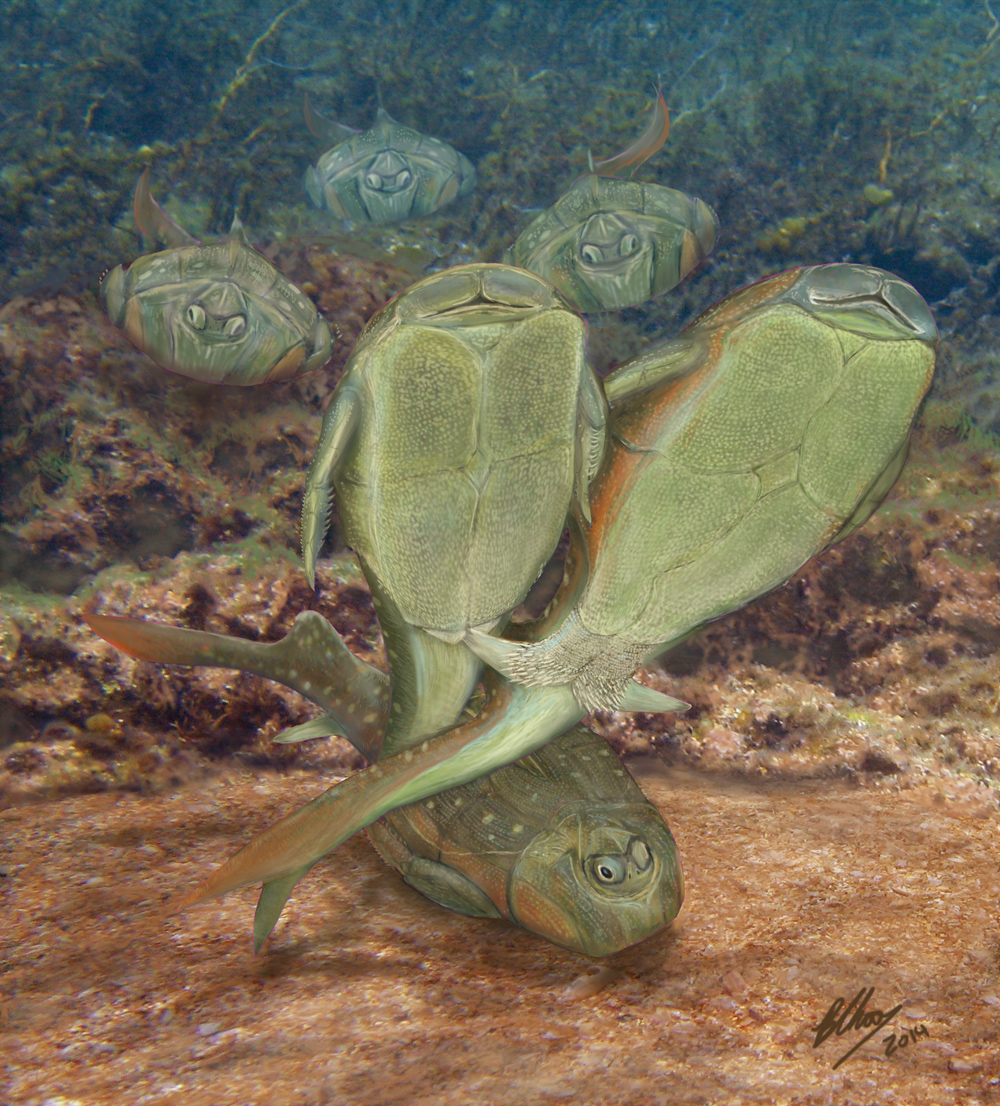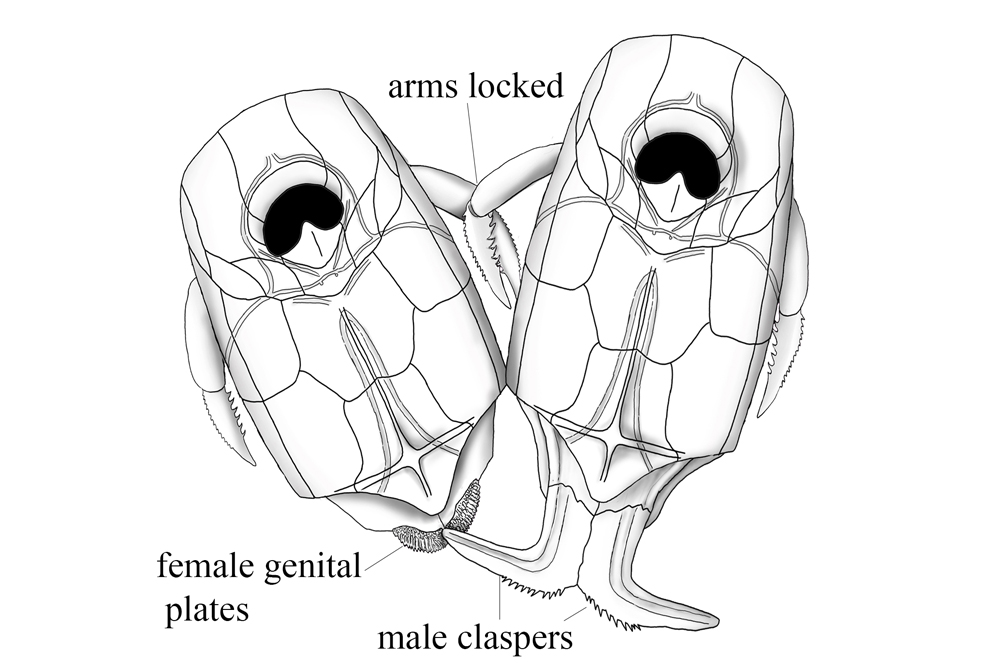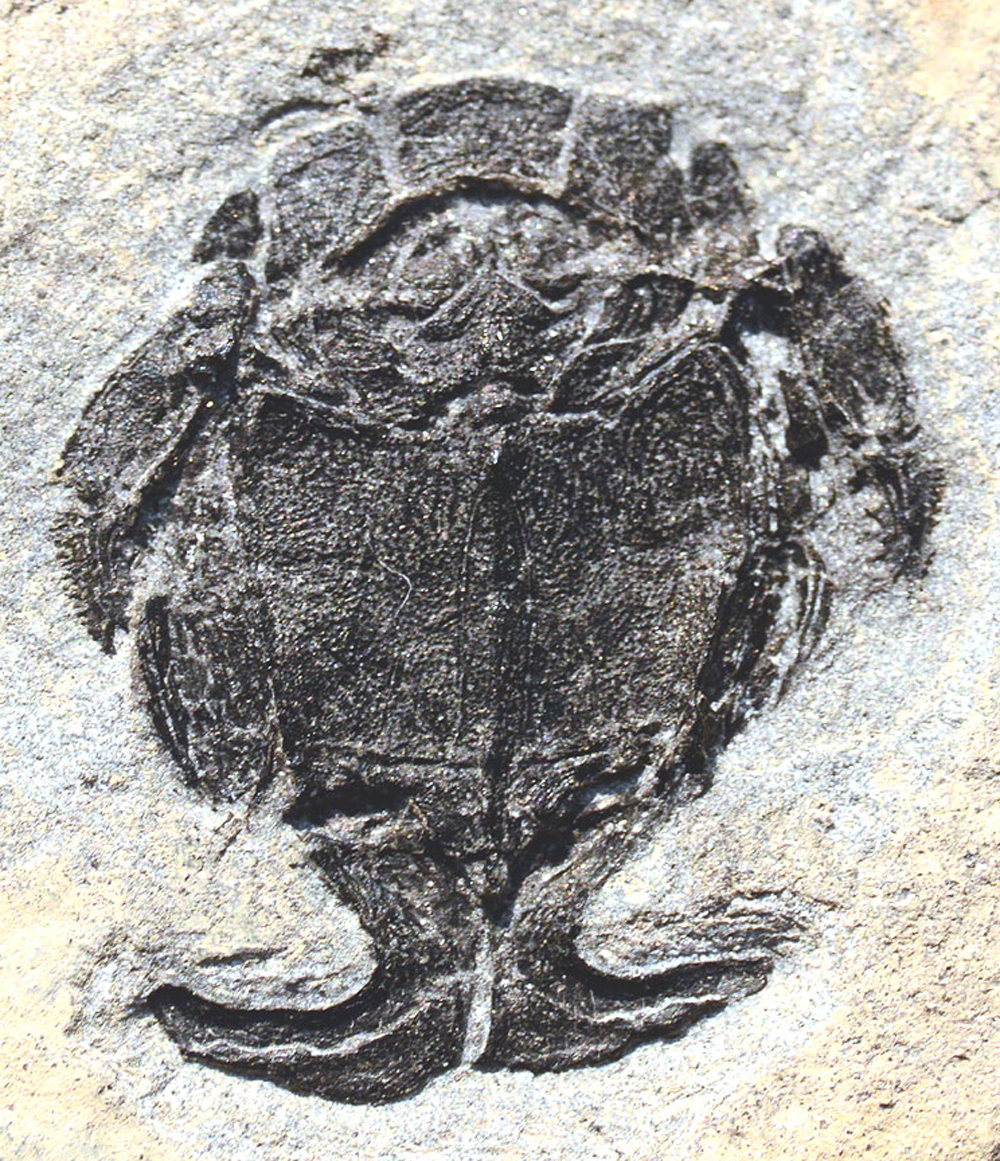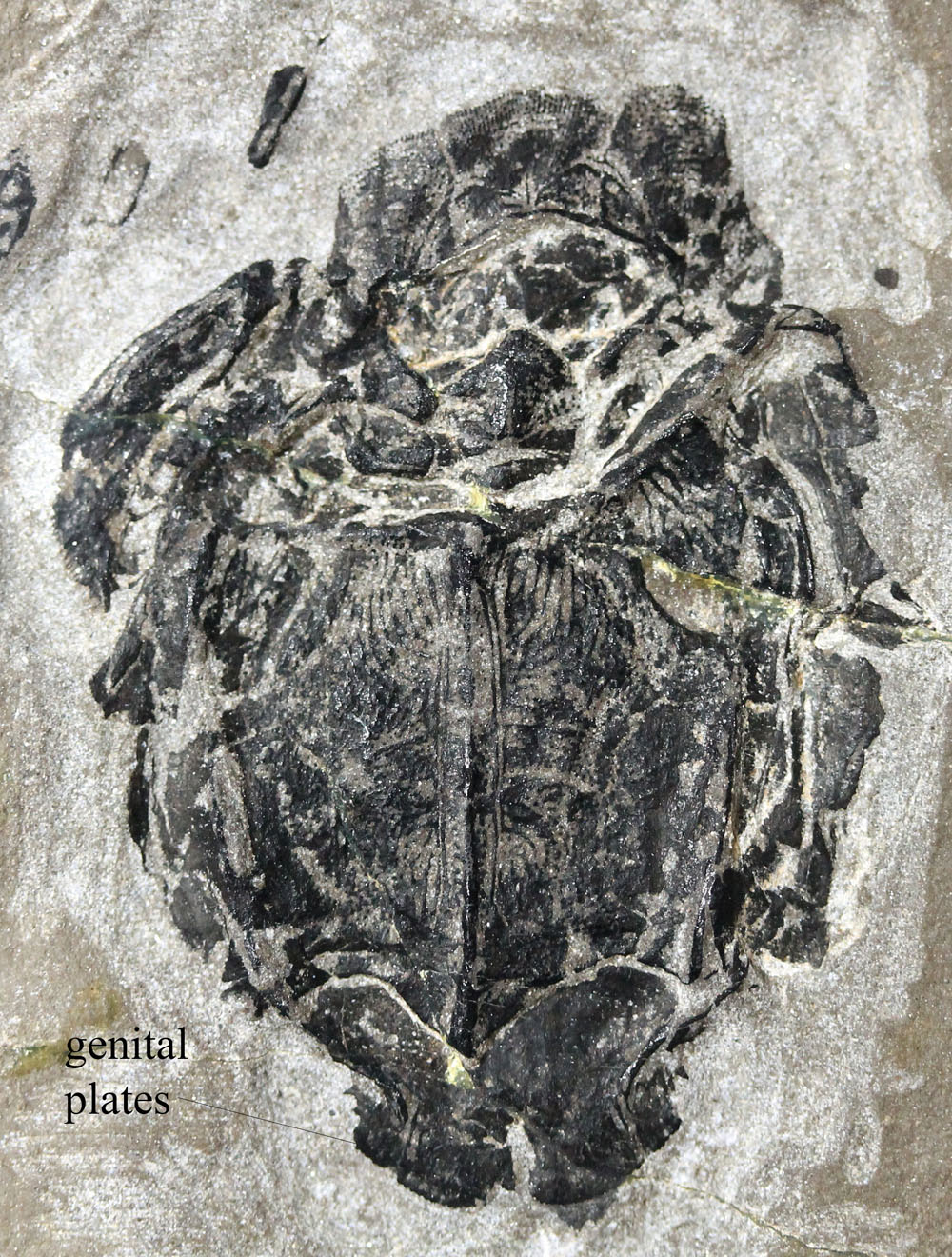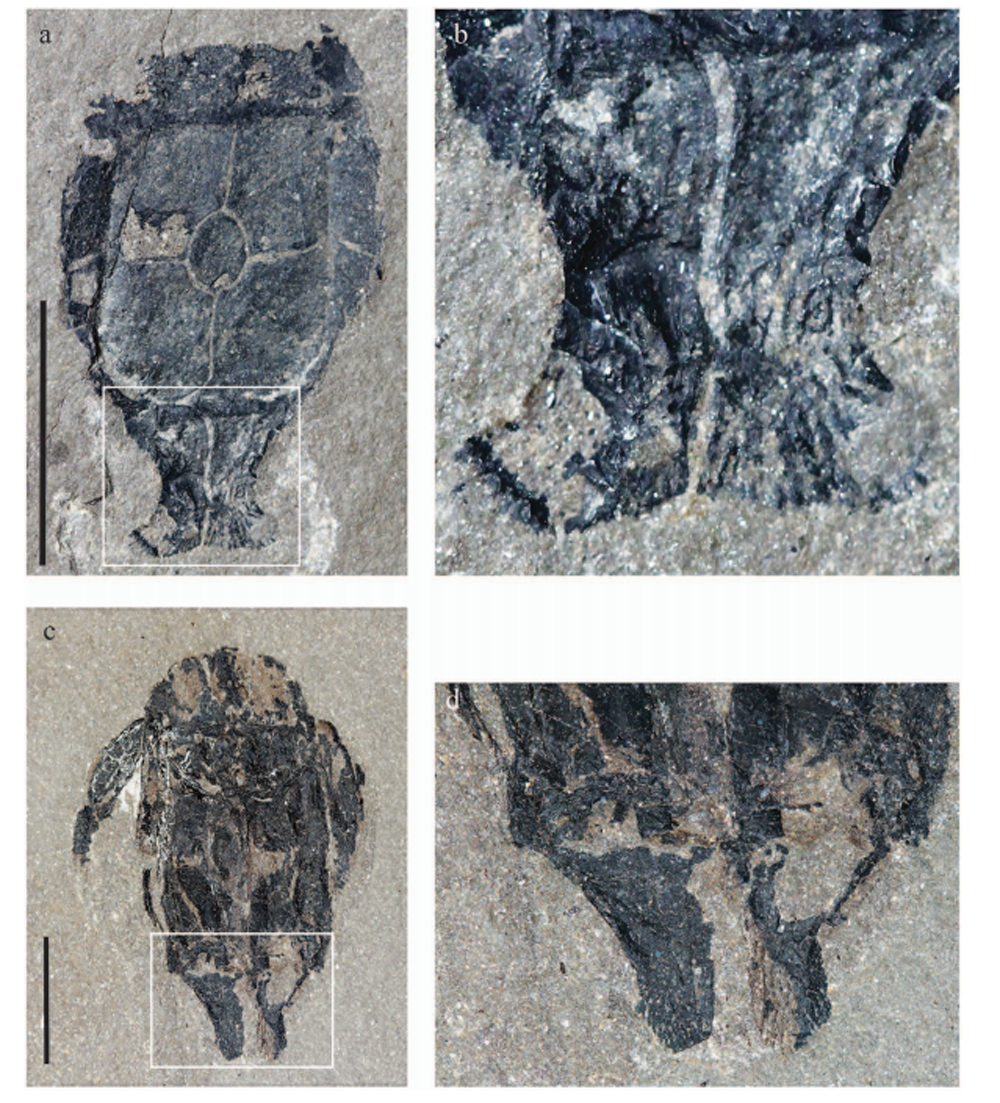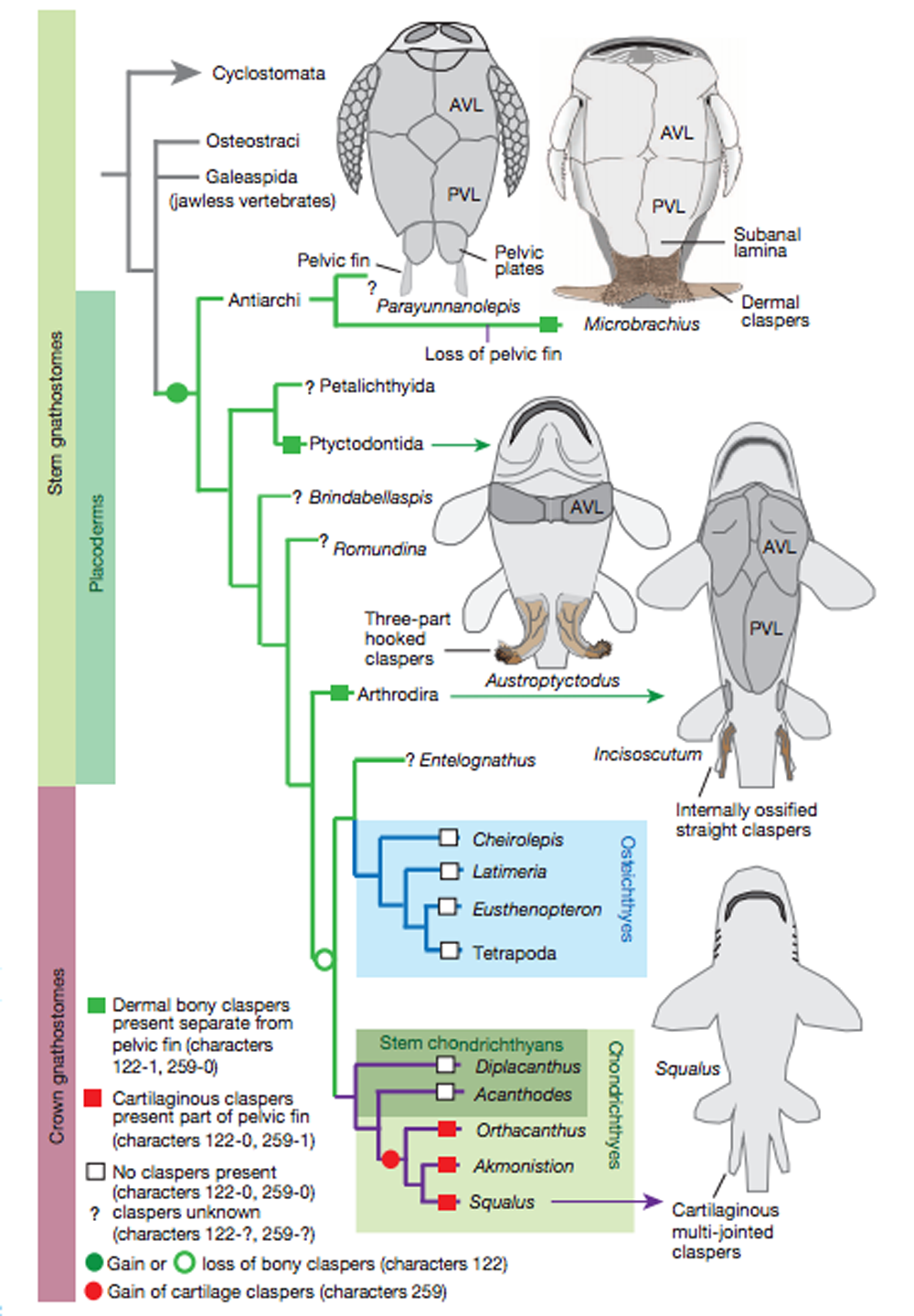Photos: First Sex Revealed in Fossilized, Square-Dancing Fish
Scientists have discovered the origin of sex dates back at least 385 million years. That's the age of the first known sex act -- Fossils of a tiny fish called Microbrachius hooked together with their jointed arms and their bony genital claspers also linked up to bony genital plates to transfer sperm from male to female. Here's a look at the odd fish and its sex organs. [Read full story on the origin of sex]
Mating Microbrachius
A very unusual sex scene takes place about 385 million years ago, as two tiny Microbrachius fish link "arms" and maneuver so that the male's genital clasper joins with the female's genital plates. This square-dancing move represents the oldest known copulation in the world. (Credit: Dr. Brian Coo, Flinders University)
Fishy Copulation
The discovery of internal fertilization in freshwater Microbrachius that lived in lakes in what is now Scotland 385 million years ago pushes back the origin of copulation to the very first jawed vertebrates. Males used an L-shaped clasper to deliver sperm, while female genital plates gave the clasper a place to anchor. (Credit: Dr. Brian Coo, Flinders University)
Microbrachius Fossil
A fossilized Microbrachius. These fish were about 3 inches (7.6 centimeters) long and covered in bony armor. An examination of fossils from Scotland revealed the bony, L-shaped genital claspers on males, as seen here. Grooves in the claspers may have provided a path for sperm. (Credit: Roger Jones, London)
Get the world’s most fascinating discoveries delivered straight to your inbox.
Female Microbrachius
This female Microbrachius fossil displays an example of the genital plates where males could anchor their claspers during mating. Placoderms, the armored prehistoric fish group of which Microbrachius was a part, were the first animals to evolve jaws, teeth, paired hind limbs and modern inner ears. Later, fish would lose the ability to mate by copulation in favor of external spawning, but some would then evolve to regain internal fertilization. (Credit: Phil Hurst, British Museum, London)
Genital plates
To the left are images of male L-shaped claspers of Microbrachius and the placoderm fish Austroptyctodus gardineri (D through G). The two right-hand columns show female genital plates of antiarch fish, the oldest of the armored placoderms. (Credit: Long, et al. Nature 2014.)
Claspers
Microbrachius fragments found in Estonia, where study researcher John Long first noticed that these ancient fish might have copulated. While examining fossils at the Tallinn University of Technology, Long found a placoderm plate with a "strange tube of bone" attached to it. He suspected it might be a genital clasper, but needed more fossil evidence to make his case. (Credit: Long, et al. Nature 2014.)
Growing genital claspers
Fossils of Microbrachius males in various stages of development reveal the growth of their genital claspers. In image A and B, underdeveloped claspers lack the L shape seen in mature fish. C and D show how the claspers grow. (Credit: Long, et al. Nature 2014.)
Fish families
A graphic showing the family tree of the earliest fishes and their evolutionary developments. Microbrachius was an antiarch fish, a group that dates back 430 million years. These fish were the first to develop jaws, pushing the origin of copulation back to the very beginning of jawed vertebrate live. (Credit: Long, et al. Nature 2014.)
Follow Stephanie Pappas on Twitter and Google+. Follow us @livescience, Facebook& Google+.

Stephanie Pappas is a contributing writer for Live Science, covering topics ranging from geoscience to archaeology to the human brain and behavior. She was previously a senior writer for Live Science but is now a freelancer based in Denver, Colorado, and regularly contributes to Scientific American and The Monitor, the monthly magazine of the American Psychological Association. Stephanie received a bachelor's degree in psychology from the University of South Carolina and a graduate certificate in science communication from the University of California, Santa Cruz.
